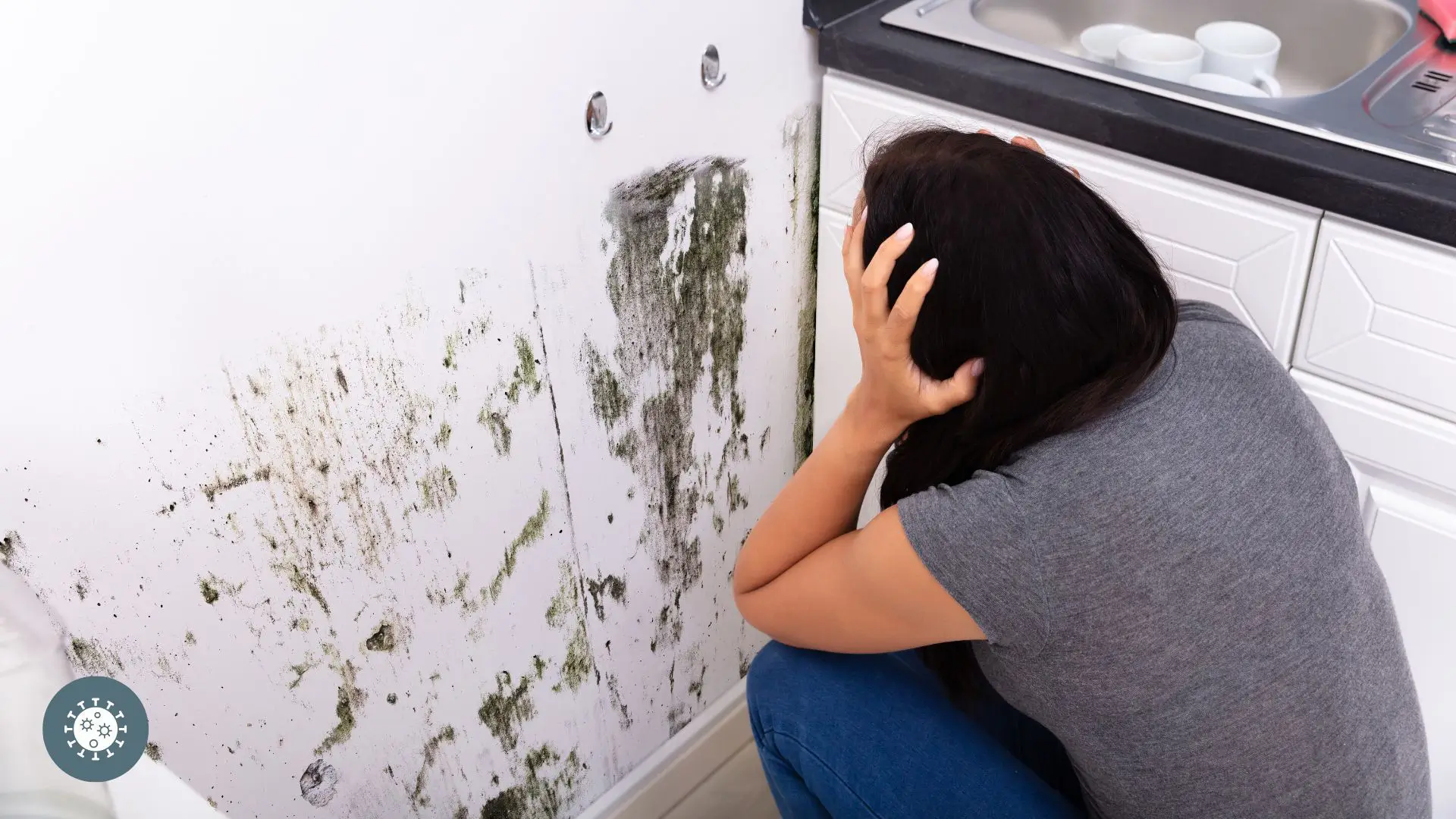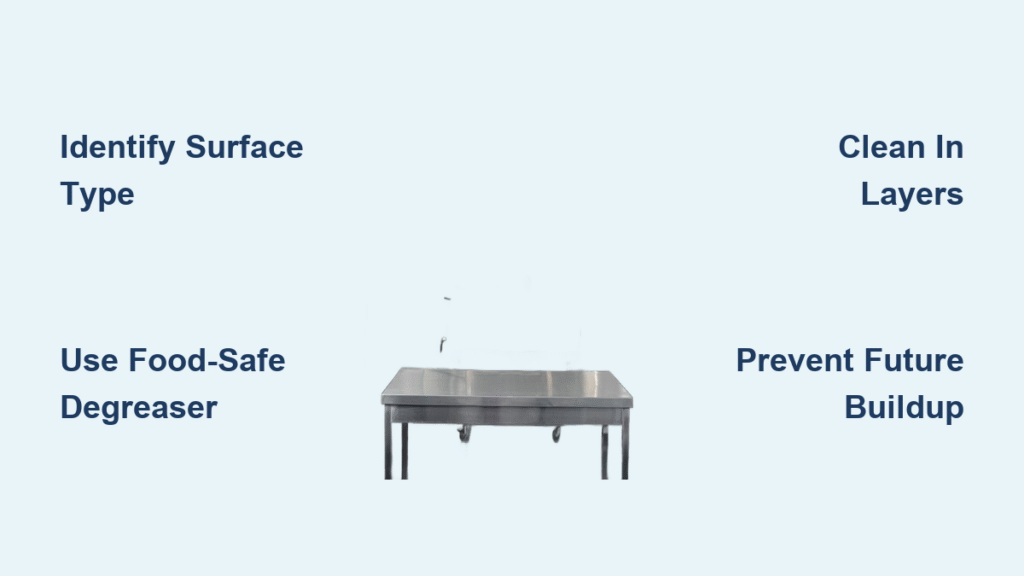Grease-coated kitchen walls aren’t just an eyesore—they’re a ticking time bomb for your restaurant. That sticky film accumulating behind your fryers and grills creates serious fire hazards, attracts pests, and can fail health inspections in seconds. Most restaurant owners dread tackling this grimy task, but professional kitchen cleaners know the secret: the right approach for your specific wall surfaces transforms this nightmare into a manageable routine. In this guide, you’ll discover exactly how to clean restaurant kitchen walls safely and effectively, whether you’re dealing with tile behind the flattop or painted drywall near prep stations, without damaging surfaces or violating health codes.
The difference between amateur and professional wall cleaning comes down to surface identification and methodical layer removal. Skip these critical steps, and you’ll either leave dangerous grease residue or damage expensive wall finishes. You’ll learn the exact cleaning schedules that keep health inspectors happy, the food-safe products that actually cut through commercial grease buildup, and the step-by-step process that takes the guesswork out of kitchen wall maintenance.
Restaurant Wall Cleaning Schedule That Prevents Health Code Violations
Six-Month Deep Clean Cycle That Meets Fire Safety Standards
Commercial kitchens serving more than 150 meals daily require professional-grade wall degreasing every 180 days—no exceptions. Health departments across the country cite improper wall maintenance as a top violation during routine inspections, with grease buildup exceeding 1/8 inch triggering immediate fines. High-volume establishments operating 12+ hours daily should schedule quarterly deep cleans to prevent dangerous accumulation that compromises fire suppression systems. During your six-month deep clean, focus on areas within three feet of cooking equipment where 90% of grease accumulates, using industrial degreasers approved for food service environments.
Monthly Maintenance Tasks That Reduce Deep Clean Time by 70%
Between deep cleans, implement a systematic monthly maintenance routine that prevents grease from baking onto surfaces. Dedicate 45-60 minutes to inspect all wall surfaces, paying special attention to backsplash areas behind cooking lines. Use a 1:10 dilution of food-safe degreaser in a spray bottle to treat visible buildup before it hardens. This targeted approach prevents the thick, stubborn layers that turn deep cleaning into a multi-day project requiring professional help. Document each maintenance session with before/after photos to demonstrate compliance during health inspections.
Daily Prevention Routine That Cuts Grease Buildup in Half
Train your closing crew to spend just seven minutes wiping down wall surfaces near cooking equipment with warm, soapy water. This simple daily habit removes fresh grease before it polymerizes into hardened layers that resist standard cleaning methods. Focus specifically on the first 18 inches above cooking surfaces where splatter concentrates. Use microfiber cloths that trap grease particles rather than spreading them, and always work from top to bottom to prevent recontamination of cleaned areas.
Identify Your Wall Surface Before Applying Any Cleaner

Tile Wall Cleaning Protocol That Preserves Grout Integrity
Ceramic tile walls dominate commercial kitchens for good reason—they withstand aggressive cleaning better than alternatives. However, the grout lines between tiles act like grease reservoirs that require specialized attention. Start by dry-wiping excess grease with paper towels to prevent smearing. Apply a baking soda paste (two parts baking soda to one part warm water) to grout lines using an old toothbrush, letting it dwell for 10 minutes to break down grease molecules. For severe buildup behind fryers, use Alconox PFS diluted per manufacturer instructions, allowing 8-10 minutes of dwell time before gentle scrubbing with non-metallic brushes. Always finish with a thorough warm water rinse—any degreaser residue will attract new grease within hours.
Painted Wall Approach That Prevents Costly Repairs
Painted drywall requires surgical precision during cleaning to avoid moisture damage that leads to peeling and bubbling. Before applying any solution, test in an inconspicuous corner and wait 24 hours to check for adverse reactions. When cleaning, work in 2×2 foot sections with a vinegar solution (½ cup white vinegar, ¼ cup baking soda, 1 gallon warm water), using a barely damp microfiber cloth. The key is minimal moisture contact—wring out cloths until they feel almost dry to the touch. Immediately follow with a dry microfiber towel to prevent water from seeping behind paint layers. Never use steam cleaners on painted surfaces, as the moisture will cause irreversible damage.
Stainless Steel Surfaces That Maintain Corrosion Resistance
Commercial stainless steel walls require cleaning with the grain direction to prevent microscopic scratches that accelerate future grease buildup. Start with a vinegar solution (one part vinegar to two parts water) applied with a microfiber cloth, letting it dwell for two minutes to soften grease. For stubborn spots near grills, use a food-grade stainless steel cleaner specifically formulated for commercial kitchens. Always finish by polishing with a dedicated stainless steel protectant that creates a barrier against future grease adhesion. Never use abrasive pads or chlorine-based cleaners, as these compromise the steel’s protective chromium oxide layer.
Step-by-Step Grease Removal Process for Maximum Effectiveness
Phase 1: Safety Protocol That Protects Your Staff
Before applying any cleaner, equip your team with nitrile gloves rated for chemical exposure and safety goggles—commercial degreasers can cause chemical burns in seconds. Ensure proper ventilation by running exhaust hoods at maximum capacity and positioning industrial fans to direct fumes outside. Post clear “Wet Floor” signage and section off cleaning areas to prevent slips. For walls above six feet, use stable platforms rather than chairs or stacked equipment—kitchen falls account for 15% of all restaurant injuries during cleaning operations.
Phase 2: Layer Removal Strategy That Actually Works
Dry Removal First: Use plastic scrapers (never metal) to remove thick grease chunks without damaging surfaces. Paper towels absorb surface oil effectively—replace frequently to avoid spreading grease.
Warm Water Pre-Treatment: Apply warm, damp cloths to soften stubborn buildup. This critical step makes chemical degreasers work 40% more effectively by penetrating grease layers.
Chemical Application: Apply industrial degreaser diluted per manufacturer instructions, starting from the bottom and working upward to prevent drips. Let dwell for the full recommended time—rushing this step is why most restaurant walls never get truly clean.
Mechanical Action: Match your tools to the surface—stiff brushes for tile grout, soft sponges for painted walls, microfiber cloths following the grain for stainless steel. Apply consistent pressure in circular motions for tiles, vertical strokes for painted surfaces.
Phase 3: Final Verification That Ensures Complete Removal
Rinse with clean, warm water using a dedicated bucket—never reuse rinse water as this redeposits grease. Use a squeegee at a 45-degree angle to remove excess water before air drying. Perform the “glove test”: run a white cotton glove across cleaned surfaces—if any grease transfers, repeat the process. Document problem areas on a wall map for targeted attention during the next maintenance cycle.
Essential Tools That Cut Cleaning Time in Half

Food-Safe Degreasers That Pass Health Inspections
Every product must display the international food-safe symbol (wine glass and fork)—using non-compliant cleaners risks immediate health code violations. Alconox PFS works exceptionally well on tile walls with months of buildup, while Liquinox provides a biodegradable option safe for all surfaces. For daily maintenance, keep a spray bottle of 1% detergent solution (one ounce per gallon of water) for quick touch-ups on visible splatter.
Steam Cleaning That Eliminates Chemical Residues
Commercial steam cleaners producing 240°F dry vapor penetrate deep into surface pores to dissolve grease while killing 99.99% of bacteria. This method reduces cleaning time by 50% on tile and stainless steel surfaces, with the added benefit of reaching into grout lines and corners inaccessible to cloths. However, never use steam on painted walls or unsealed wood—it will cause irreversible moisture damage within minutes.
Prevent Future Grease Buildup with These Proven Strategies
Install stainless steel splatter guards behind high-heat cooking equipment—they reduce wall grease by 70% while making daily cleanup faster. Optimize your ventilation system to pull 100 CFM per linear foot of cooking surface; inadequate airflow is the primary cause of accelerated grease accumulation. During monthly maintenance, apply a food-safe anti-grease coating to high-risk areas—it creates a barrier that prevents grease from bonding to surfaces, making future cleanings significantly easier.
Troubleshooting Common Wall Cleaning Problems

Persistent Stains That Won’t Budge
When standard methods fail, increase degreaser dwell time to 15-20 minutes and use mechanical agitation with stiff brushes. For extreme cases behind deep fryers, apply degreaser twice with intermediate scrubbing—grease buildup often forms in distinct layers that require multiple treatments.
Surface Damage During Cleaning
If paint starts bubbling or tile glaze shows wear, immediately stop and switch to milder solutions. Document the affected areas for repainting or resealing during your next maintenance window. For stainless steel, scratches indicate you’re cleaning against the grain—always follow the manufacturer’s directional markings.
Integrate Wall Cleaning with Comprehensive Kitchen Maintenance
Schedule wall cleaning during your six-month deep clean cycle alongside exhaust hood cleaning, equipment sanitization, and fire suppression system inspections. Maintain detailed records including before/after photos, product lot numbers, staff signatures, and problem area documentation. Create a laminated wall map showing cleaning dates—this visual system ensures no sections get missed during busy deep-clean days and provides concrete evidence of compliance during health inspections.
Clean restaurant kitchen walls aren’t just about passing inspections—they’re about creating a safe, efficient workspace where your culinary team can focus on what matters most. By implementing these surface-specific cleaning methods and consistent maintenance schedules, you’ll transform wall cleaning from dreaded chore to routine maintenance that protects your investment, ensures regulatory compliance, and creates a healthier environment for your staff and customers. The next time you see grease starting to build up, remember: a few minutes of daily prevention saves hours of deep cleaning later.



